Oldenburgia grandis
| Botanical Name | Oldenburgia grandis |
|||||||||||
| Family | Asteraceae - The daisy family. |
|||||||||||
| Pronunciation | old-en-BUR-gee-uh GRAN-dees / GRAN-dis |
|||||||||||
| Common Name(s) |
English: Donkey Ears; Suurberg Daisycushion; Suurberg Cushion Bush; Rabbit's ears; Lamb's ears
Afrikaans: Suurbergkussingbos; Lepelboom; Bastersuikerbos; Kreupelbos
|
|||||||||||
| Plant Group |
|
|||||||||||
| Plant Size |
|
|||||||||||
| Position |
|
|||||||||||
| General Information |
|
|||||||||||
| Specific Information | Oldenburgia grandis is a unique, long lived, small tree or large shrub with gnarled, twisted branches and corky bark. The oblong leaves are stalk-less, stiff and leathery and are held in rosettes at the ends of branches. Mature leaves are shiny dark green above with a white felty surface below, making an interesting colour contrast. The leaves are exceptionally large with a length of up to 36 cm and width of 15 cm. Emerging leaves are short, fat and densely and completely felted with soft white hairs. Often mistakenly thought of as being part of the Protea family, Oldenburgia grandis' thistle-like flowers indicate that it belongs in the Daisy Family. The flower-head broadens as it matures to expose the nut-like fruits which are thin, brown and have a tuft of long, pale hairs at the tips. Flowering takes place irregularly throughout the year, often with an increase of flowers in autumn. The dense silvery hairs on the young leaves and shoots protect them from sun and wind damage. The corky bark is fire resistant and the plant has the capacity to re-sprout after a fire. Oldenburgia grandis is potentially threatened by habitat loss in some areas. It has a geographic range of only 500 km² and very specific habitat needs which further limit its prevalence. The leaves of Oldenburgia arbuscula are reportedly poisonous so it is safer to assume that the leaves of this species may also be poisonous. |
|||||||||||
| Ad Break | ||||||||||||
| Flowers | ||||||||||||
| Description | Flowers are large, 12 cm in diameter, and bear a resemblance to those of an artichoke or a giant thistle. The solitary heads are held on tall, thick, densely felted, branched stems which arise from the center of the rosette of leaves.
|
|||||||||||
| Season |
|
|||||||||||
| Colour |
|
|||||||||||
| Growth Rate |
|
|||||||||||
| Plant Uses |
|
|||||||||||
| Distribution and Habitat | Oldenburgia grandis is endemic to a small area in the Eastern Cape, from the Suurberg Mountains to Grahamstown, in acidic soil on sandstone and quartzite outcrops. |
|||||||||||
| Planting Suggestions | Oldenburgia grandis is suited to rocky areas in full sun with good ventilation but also performs well in composted, acidic, sandy loam. This species needs to be watered moderately when in growth and kept dry in winter. Minimum winter temperatures are 7-10 º C. The tree will survive lower temperatures but where light frost conditions are experienced, the plant must be protected during winter. Oldenburgia grandis can be propagated from seed but these have a very low germination rate. Semi-hard cuttings in sand are purportedly more successful. The difficulty is in attaining material as this plant is not available in nurseries and is rarely seen in gardens. The old method of digging a deep hole and filling it with soil and compost has resulted in many trees failing to thrive, dying, rotting at the base or worse still, falling over in later years due to poor root development. Refer to the following sites for the best method of planting trees: International Society of Arboriculture: New Tree Planting Tree People: Plant the right way For those of you who have a clay problem try: |
|||||||||||
| Lorraine's Garden Notes | References: COATES-PALGRAVE, M. 2002. Keith-Coates Palgrave Trees of southern Africa, 3rd edn., 2nd imp. Struik Publishers, Cape Town. JOHN MANNING AND COLIN PATERSON-JONES. 2004. South African Wild Flowers: Jewels of the Veld, Struik Publishers, Cape Town. PlantZAfrica.com: Plants of Southern Africa: Oldenburgia grandis Wikipedia: Oldenburgia grandis iSpot: Observations in the Species: Oldenburgia grandis Rogers Trees and Shrubs: Oldenburgia grandis Protea Atlas: Oldenburgia grandis SANBI Red List of South African Plants: Oldenburgia grandis Images: The first four images above are the property of the photographer, Phillip Crous © |
|||||||||||
| Medicinal Uses | No data found. |
|||||||||||
| Ad Break | ||||||||||||


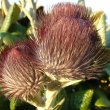
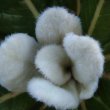

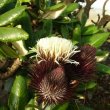
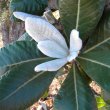
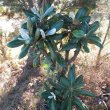


Discuss this plant
Share knowledge, ask a question or give an experience.